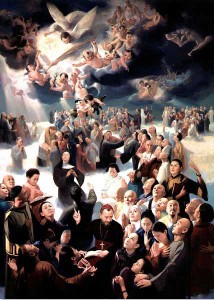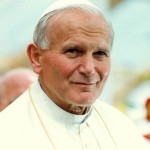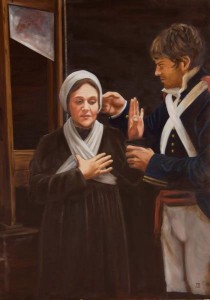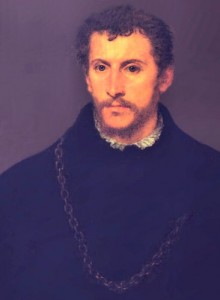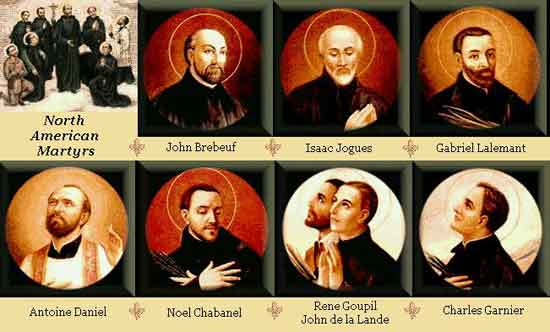Episode 2 – The Martyr’s Cup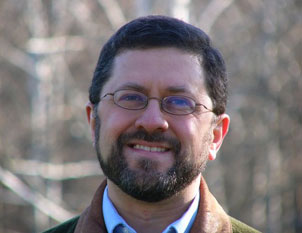
[powerpress]
The Resilient Church with Mike Aquilina, offers a fascinating look at the trials and triumphs of the Catholic Church over the past two thousand years. Fast-paced sketches of critical periods in church history give readers perspective on the challenges faced by the church today. Mike Aquilina does not shrink from the realities of the past, including badly behaved leaders and those who betrayed the Lord. Yet he also leaves us all with well-founded hope for the future: God remains faithful in every circumstance and fulfills his promise to remain with his church always.
 Pick up a copy of Mke’s book. You’ll find so much more and invaluable references and resoources, as well
Pick up a copy of Mke’s book. You’ll find so much more and invaluable references and resoources, as well
Also visit Mike’s “Discerning Hearts†page for more audio downloads and information!
Tags: catholic, catholic podcast, catholic prayer, cathollc spirituality, church history, martyrdom, mike aquilina, Resilient Church
This entry was posted on Wednesday, June 18th, 2014 at 7:26 am
You can follow any responses to this entry through the RSS 2.0 feed.
Deacon James Keating, of the Institute for Priestly Formation, speaks about “The Role of Deacon” and St. Lawrence
[powerpress]
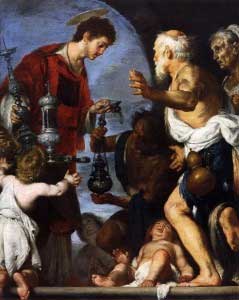 St. Lawrence of Rome was one of the seven deacons of ancient Rome who were martyred during the persecution of Valerian in 258.
St. Lawrence of Rome was one of the seven deacons of ancient Rome who were martyred during the persecution of Valerian in 258.
His story is so touching (click here for a thorough telling). He models the charism of diakonia…genuine “ministry” of the gospel in the heart of the Church. He witnessed to and lived out the command of Our Lord as found in Matthew 25. Oh…to truly know modern day deacons in the order of Lawrence…
Often we see holy cards that depict Lawrence fully vested and holding what looks like a rack from a Weber kettle. But his martyrdom was actually horrific and deserving of deeper reflection. He could have avoided it, given the Roman official what he desired and spared his own life…but he didn’t. The grace he received to bear witness lives for the centuries as a tremendous testimony of faith speaking out in truth and love…no matter what. The image below is by Titian, and is the one I hold in my heart for St. Lawrence.
Tags: deacon, Deacon James Keating, deacons, heart, institute for priestly formation, martyrdom, rome, witness
This entry was posted on Saturday, August 10th, 2013 at 7:30 am
You can follow any responses to this entry through the RSS 2.0 feed.
I leave it to Omar F. A. Gutierrez to write so well on the life,  times, and death of this great saint.
times, and death of this great saint.
You may perhaps remember a scene from Braveheart with Robert the Bruce and his father the leper.
When his son first brings him news about the rebellion led by William Wallace, a commoner, the father instantly devises a plan by which the Bruce clan can gain favor with the Scots and with the English. You get the feeling that Robert is a bit taken aback by the so easy and cold calculation of his rotted father.
He says,
This Wallace. He doesn’t even have a knighthood. But he fights with passion, and he is clever. He inspires men.
His father replies:
You admire him. Uncompromising men are easy to admire. He has courage. So does a dog. But you must understand this: Edward Longshanks is the most ruthless king ever to sit on the throne of England, and none of us, and nothing of Scotland, will survive unless we are as ruthless, more ruthless, than he.
“Uncompromising men are easy to admire.†There is in this world, and it seems more so today, a habit of admiring the compromising fellow. With the ubiquitous dictatorship of relativism that oppresses so many minds, it only makes sense that the general public would take offense at anyone who dares stand up for something with uncompromising stolidity.
The holder of objective truth claims is – so the sages of Manhattan and Melrose Place tell us – no different than the Nazi who insists on the claim to racial purity or the Islamic bomber who literally does cling to his religion and guns.
For this reason, the figure of St. Thomas More, whose feast it is today, can be such a  perplexing figure for the modern mind. And even the Catholic who consumes their breakfast whilst pouring over the latest moto proprio can miss this astonishingly great man. I have to admit having skipped over him in my studies, chalking him up with all the other saints and blesseds who gain God’s favor by losing their heads. But St. Thomas More is more than just a martyr.
perplexing figure for the modern mind. And even the Catholic who consumes their breakfast whilst pouring over the latest moto proprio can miss this astonishingly great man. I have to admit having skipped over him in my studies, chalking him up with all the other saints and blesseds who gain God’s favor by losing their heads. But St. Thomas More is more than just a martyr.
He’s an example of such exquisite lack of compromise that he can teach us a great deal about the Catholic Social Doctrine we long to understand and live out. (more…)
Tags: children, england, english reformation, love, martyr, martyrdom, protestant reformation, tudors
This entry was posted on Saturday, June 22nd, 2013 at 6:32 am
You can follow any responses to this entry through the RSS 2.0 feed.
St. John Fisher, 1460-1535
from the Catholic Information Network on St. John Fisher
John Fisher, born at Beverley, Yorkshire, was the son of a prosperous mercer who died in 1477. About 1482 the boy’s mother sent him to Cambridge University where he distinguished himself as a scholar. He was ordained in 1491 on the title of his Fellowship of Michaelhouse (now incorporated in Trinity College). After studying theology for ten years, he took his D.D. in 1501, and was later recognized as one of the leading theologians of Europe.
His university soon discovered his gifts as an administrator; he held in turn the offices of proctor, vice-chancellor and chancellor, and in 1514 he received the unique distinction of being elected chancellor for life. It was in the course of his university duties that, in 1494, he first met the Lady Margaret Beaufort, mother of Henry VII. He became her confessor and advised her on the charitable uses of her great wealth. It was at his suggestion that a preachership was endowed at Cambridge and Readerships in Divinity in both universities. He was largely responsible for her decision to refound and endow Godshouse as Christ’s College, and, after her death in 1509, he carried out her wishes in founding St. John’s College, to which he transferred lands given to him by the Lady Margaret.
He was made bishop of Rochester in 1504, and he ruled that poorest of sees for thirty years; he was a truly pastoral bishop, encouraging his priests by his manner of life and by his interest in their welfare. He was a noted and assiduous preacher, and he did all he could to provide well-instructed priests who could preach to the people.
It was due to his influence that Erasmus was brought to Cambridge as lecturer in Greek. He and Sir Thomas More became close friends of John Fisher, and there is a record of the three being together at Rochester in 1516. Sir Thomas More became High Steward of Cambridge University in 1525. He and John Fisher had been drawn closer together at this period by the call to combat the Lutheran heresy. The bishop wrote his Confutatio (1523) in Latin, a book for theologians by a theologian, which had a wide circulation on
the continent; the layman wrote his Dialogue Concerning Heresies (1528) in English for the common reader. It may be noted that in his sermons and writings against heretics, John Fisher never used the abusive language of contemporary controversy; he relied on reason and persuasion to bring back the prodigals.
The year 1527 was fateful to England, for it was then that Henry VIII took the first steps towards seeking the annulment of his marriage with Catherine of Aragon. She had married his elder brother Arthur in 1501; he died six months later. Catherine always maintained that the marriage had not been consummated. A papal dispensation allowed Henry VIII to marry his brother’s widow in 1509. The lack of a male heir turned his thoughts to the dissolution of his marriage; he argued that the papal dispensation had no validity. Cardinal Wosley was instructed to seek the opinion of John Fisher, whose prestige as a man of holy life and of great learning gave exceptional weight to his views. After studying the problem thoroughly he came to the conclusion that the papal dispensation was valid, and therefore that Henry and Catherine were man and wife in the eyes of the church. From that position he never moved in spite of the pressure brought to bear on him by king and cardinal. He was not content with passive opposition, but in the legatine court set up to try the issue, and from the pulpit, he defended the queen, although he knew that Henry regarded opposition to his will as a form of treason.
An attempt to implicate John Fisher in the fate of the Nun of Kent failed; she had prophesied against the king. A more certain weapon was provided by the Act of Succession of 1534. This declared the king’s marriage to Catherine void, and his subsequent marriage to Anne Boleyn to be lawful; the succession was settled on her children. All had to take an oath accepting the whole Act. When the oath was tendered to
John Fisher he refused to take it; so did Sir Thomas More. Both were prepared to accept the succession as determined by Parliament, but not that part of the Act which implied a denial of the pope’s authority, inasmuch as it declared the papal dispensation invalid.
On April 17th, 1534 Bishop John Fisher and Sir Thomas More were committed to the Tower. They were kept apart.
John Fisher was sixty-five years of age when he was imprisoned; he was suffering from a wasting sickness and was clearly nearing his end. Nothing shows the king’s vindictiveness more than his relentless persecution of this aged man stricken by a fatal illness. On May 20th, 1535, the pope created John Fisher Cardinal-priest of the title of St. Vitalis. This so infuriated the king that he hurried forward the proceedings against the new cardinal. (more…)
Tags: bishop, english reformation, John Fisher, martyr, martyrdom, martyrs of england, priests, protestant reformation
This entry was posted on Saturday, June 22nd, 2013 at 6:00 am
You can follow any responses to this entry through the RSS 2.0 feed.
Mike Aquilina shares with us the story of St. Agnes.
[powerpress]
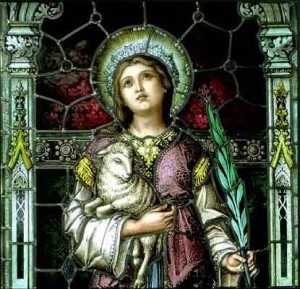 A young girl who would help to break open the hearts of many, so that grace could pour in. She was “a lamb for Christ”.  Mike also discusses the challenges to life, including the “ancient” practice of abortion.
A young girl who would help to break open the hearts of many, so that grace could pour in. She was “a lamb for Christ”.  Mike also discusses the challenges to life, including the “ancient” practice of abortion.
wiki – According to tradition, Saint Agnes was a member of the Roman nobility born c. 291 and raised in a Christian family. She suffered martyrdom at the age of twelveor thirteen during the reign of the Roman Emperor Diocletian, on 21 January 304.
The Prefect Sempronius wished Agnes to marry his son, and on Agnes’ refusal he condemned her to death. As Roman law did not permit the execution of virgins, Sempronius had a naked Agnes dragged through the streets to a brothel. Various versions of the legend give different methods of escape from this predicament. In one, as she prayed, her hair grew and covered her body. It was also said that all of the men who attempted to rape her were immediately struck blind. In another the son of the prefect is struck dead, but revived after Agnes prayed for him, causing her release. There is then a trial from which Sempronius excuses himself, and another figure presides, sentencing her to death. When led out to die she was tied to a stake, but the bundle of wood would not burn, or the flames parted away from her, whereupon the officer in charge of the troops drew his swordbeheaded her, or, in some other texts, stabbed her in the throat. It is also said that the blood of Agnes poured to the stadium floor where other Christians soaked up the blood with cloths. and
The daughter of Constantine I, Saint Constance, was also said to have been cured of leprosy after praying at Agnes’ tomb.
A prayer to St. Agnes
Let us gain courage for our own battle
by honoring the martyrdom of the glorious virgin Agnes.
St. Agnes, vessel of honor,
flower of unfading fragrance,beloved of the choirs of Angels,you are an example to the worth of virtue and chastity.
O you who wear a Martyr’s palm
and a virgin’s wreath,
pray for us that,
though unworthy of a special crown,
we may have our names written in the list of Saints.
Tags: catacomb, fathers mike, hearts, martyrdom, mike aquilina, saint agnes, virgins, virtue
This entry was posted on Monday, January 21st, 2013 at 12:43 am
You can follow any responses to this entry through the RSS 2.0 feed.
Sunday 1 October 2000 (excerpt taken from vatican.va)
2. “The precepts of the Lord give joy to the heart” (Responsorial Psalm). These words of the Responsorial Psalm clearly reflect the experience of Augustine Zhao Rong and his 119 companions, martyrs in China. The testimonies which have come down to us allow us to glimpse in them a state of mind marked by deep serenity and joy.
Today the Church is grateful to her Lord, who blesses her and bathes her in light with the radiant holiness of these sons and daughters of China. Is not the Holy Year the most appropriate moment to make their heroic witness shine resplendently? Young Ann Wang, a 14-year-old, withstood the threats of the torturers who invited her to apostatize. Ready for her beheading, she declared with a radiant face: “The door of heaven is open to all”, three times murmuring: “Jesus”. And 18-year-old Chi Zhuzi, cried out fearlessly to those who had just cut off his right arm and were preparing to flay him alive: “Every piece of my flesh, every drop of my blood will tell you that I am Christian”.
The other 85 Chinese men and women of every age and state, priests, religious and lay people, showed the same conviction and joy, sealing their unfailing fidelity to Christ and the Church with the gift of their lives. This occurred over the course of several centuries and in a complex and difficult era of China’s history. Today’s celebration is not the appropriate time to pass judgement on those historical periods: this can and should be done elsewhere. Today, with this solemn proclamation of holiness, the Church intends merely to recognize that those martyrs are an example of courage and consistency to us all, and that they honour the noble Chinese people.
Resplendent in this host of martyrs are also the 33 missionaries who left their land and sought to immerse themselves in the Chinese world, lovingly assimilating its features in the desire to proclaim Christ and to serve those people. Their tombs are there as if to signify their definitive belonging to China, which they deeply loved, although with their human limitations, and for which they spent all their energies. “We never wronged anyone”, Bishop Francis Fogolla replied to the governor who was preparing to strike him with his sword. “On the contrary, we have done good to many”. (In Chinese) God sends down happiness.
Tags: Augustine Zhao Rong, catholic, catholic podcast, catholic prayer, cathollc spirituality, china, Church in China HOMILY, martyrdom, martyrs, martyrs in China, Responsorial Psalm, St. Augustine Zhao Rong
This entry was posted on Monday, July 9th, 2012 at 8:09 am
You can follow any responses to this entry through the RSS 2.0 feed.
Join Bruce and I as we discuss with Mike Aquilina the powerful and at the same time, poignant witness of the Holy Roman  Martyrs[powerpress]
Martyrs[powerpress]
From Mike’s great website The Way of the Matyrs: ROMAN PROTOMARTYRS
Monday June 30th 2008, 10:23 am
Filed under: PatristicsToday’s the feast of the first Roman Martyrs. Theirs is a story you just have to hear. But first we have to backtrack a little bit.
In July of A.D. 64, during the tenth year of Nero’s reign, a great fire consumed much of the city of Rome. The fire raged out of control for seven days — and then it started again, mysteriously, a day later. Many in Rome knew that Nero had been eager to do some urban redevelopment. He had a plan that included an opulent golden palace for himself. The problem was that so many buildings were standing in his way — many of them teeming wooden tenements housing Rome’s poor and working class.
The fire seemed too convenient for Nero’s purposes — and his delight in watching the blaze didn’t relieve anybody’s suspicions. If he didn’t exactly fiddle while Rome burned, he at least recited his poems. Nero needed a scapegoat, and an upstart religious cult, Jewish in origin and with foreign associations, served his purposes well. Nero, who was a perverse expert at human torment, had some of its members tortured till they were so mad they would confess to any crime. Once they had confessed, he had others arrested.
He must have known, however, that the charges would not hold up. So he condemned them not for arson, or treason, or conspiracy, but for “hatred of humanity.â€
To amuse the people, he arranged for their execution to be a spectacle, entertainment on a grand scale. The Roman historian Tacitus (who had contempt for the religion, but greater contempt for Nero) describes in gruesome detail the tortures that took place amid a party in Nero’s gardens.
Mockery of every sort was added to their deaths. Covered with the skins of beasts, they were torn by dogs and perished, or were nailed to crosses, or were doomed to the flames. These served to illuminate the night when daylight failed. Nero had thrown open the gardens for the spectacle, and was exhibiting a show in the circus, while he mingled with the people in the dress of a charioteer or drove about in a chariot. Hence, even for criminals who deserved extreme and exemplary punishment there arose a feeling of compassion; for it was not, as it seemed, for the public good, but to glut one man’s cruelty, that they were being punished.
That is all we know about the first Roman martyrs. We know none of their names. Tacitus doesn’t tell us why they were willing to die this way rather than renounce their faith. Yet this should be an important question for us to consider. Why did the martyrs do this? What prepared them to face death so bravely? To what exactly did they bear witness with their death?
The answers to these questions (and many more) can be found in the rest of the article, at the archive of Touchstone Magazine. The article originated in a talk I gave in Rome in 2005 on the feast of the Roman Martyrs. It’s called “The Roman Martyrs and Their Mass.â€
I also treat the subject in my book The Resilient Church: The Glory, the Shame, & the Hope for Tomorrow.
Tags: catholic, catholic podcast, catholic prayer, cathollc spirituality, Holy Roman Martyrs, martyrdom, martyrs, mike aquilina, Roman Martyrs, rome
This entry was posted on Saturday, June 30th, 2012 at 10:47 am
You can follow any responses to this entry through the RSS 2.0 feed.

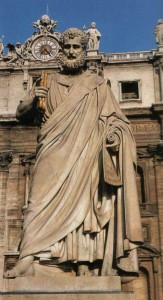 This is a FANTASTIC summation of the lives of Peter and Paul in the life of the early Church by Vatican Radio…don’t miss it!
This is a FANTASTIC summation of the lives of Peter and Paul in the life of the early Church by Vatican Radio…don’t miss it!
Why Peter and Paul ?
Wherever you go in Rome you always see Saint Peter and Saint Paul linked together.
Their feast day too is celebrated on the same day . Shouldn’t they each have their own feast day?
The irony is that they fought mightily in their lifetime and not just about trivial things but about matters that went to the very heart of what Christianity is all about.
Listen to Scripture scholar Mark Benedict Coleridge , Archbishop of Canberra and
Goulburn:[powerpress = “Vatican-Radio”]
Tags: acts of the apostles, apostles, catholic, catholic podcast, catholic prayer, cathollc spirituality, early church, martyr, martyrdom, Peter and Paul, Saint Peter, st peter, st. paul, sts. peter and paul, vatican radio
This entry was posted on Friday, June 29th, 2012 at 5:57 am
You can follow any responses to this entry through the RSS 2.0 feed.
Beatification of Sister Marguerite Rutan,
June 19, 2011
From the Daughter of Charity of St. Vincent de Paul website:
“The lives of the saints are not limited to their earthly biographies but also include their being and working in God after death. In the saints one thing becomes clear: those who draw near to God do not withdraw from men, but rather become truly close to them.â€(Deus Caritas est 42).
In February 2011 we published a short article on Sister Marguerite Rutan, Daughter of Charity and martyr (see www.filles-de-la-charite.org/en/news). As her beatification approaches we invite you to learn more about her life. Who is this new example of Vincentian holiness?
A presentation of her life:
Marguerite Rutan was born on 23 April 1736 in Metz in Lorraine and was baptized the same day. Marguerite was the 8th of 15 children. Marie Forat, her mother, was very Christian and her father, Charles Gaspard Rutan was an honest and courageous workman. With them she learned to live her life as a gift from God.
Her father introduced her to mathematics and linear design. Soon she was able to keep the accounts of his business. She helped with all her family until she was 21 years old.
She had the profound conviction she was being called by Jesus. With Him she looked for a way to give herself to the service of those who were poor.
In 1756, Marguerite Rutan entered the Company of the Daughters of Charity to be near those who were suffering, marginalized or excluded. She wanted to serve them. Following Christ she encouraged charity in those around her. For over 20 years she placed everything she received from God and others at the service of the poorest of the poor, no matter where she was sent by her superiors.
In 1779 she was sent to serve in the Hospital of Dax. Sr. Marguerite and her Sisters worked for 10 years relating with the townspeople. The Sisters were admired and respected.
In 1789 the troubling period of the Revolution began. It profoundly changed the country and personally touched Sr. Marguerite with suffering and death (April 9, 1794). Her faithfulness to Christ and the Church lead her to martyrdom. The life of Sr. Marguerite was anchored in the person of Christ and his Word. Each day she profoundly encountered the love of Christ which drew her to serve as He served.
Following Christ, servant of her brothers and sisters, kneeling to wash their feet, Sr. Marguerite gave her life to serve the poor and the sick and building brotherhood with all.
Following Christ, servant of the will of the Father, Sr. Marguerite based her life on the Gospel, desiring only one thing: to do the will of God.
Following Christ, servant of the suffering, despised, persecuted, Sr. Marguerite abandoned herself totoally to God. During the revolutionary turmoil, she showed the extremity of her love.
Interesting links:
Marguerite Rutan: A little history of her life
Tags: Blessed Marguerite Rutan, catholic, catholic podcast, catholic prayer, cathollc spirituality, daughters of charity, france, french revolution, Marguerite Rutan, martyr, martyrdom, Sister Marguerite Rutan
This entry was posted on Thursday, June 21st, 2012 at 1:16 pm
You can follow any responses to this entry through the RSS 2.0 feed.
“The Song at the Scaffold” by Gertrude von le Forte’s is one of the best novella’s…ever!  Vivian Dudro, writer and editor at Igantius Press, 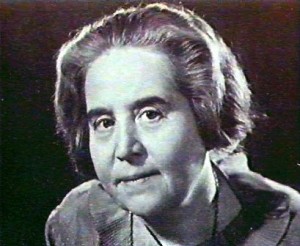 engages in a wonderful conversation about the work of German author Gertrude von le Forte who was a writer of novels, poems, and essays.  A convert  to Catholicism in 1926, most of  von le Forte work came after her conversion. In 1952 she won the Gottfried-Keller Prize, an esteemed Swiss literary award.
engages in a wonderful conversation about the work of German author Gertrude von le Forte who was a writer of novels, poems, and essays.  A convert  to Catholicism in 1926, most of  von le Forte work came after her conversion. In 1952 she won the Gottfried-Keller Prize, an esteemed Swiss literary award.
[powerpress]
Set during the French Revolution, this classic novella is based on the true story of the Carmelite nuns of Compiègne, who offered their lives for the preservation of the Church in France. The Song at the Scaffold was the original inspiration for the opera Dialogues of the Carmelites written by Francis Poulenc, which premiered in 1957. The opera was based on a libretto with this same title written by Georges Bernanos.
As Vivian points out in our discussion, von le Forte’s work is as relevant today as it was in the last century. In the course of our conversation, we discuss the influence of the Carmelite tradition and it’s influence on Edith Stein (St. Teresa Benedicta of the Cross) and Bl. John Paul II, as well the role of redemptive suffering in the life of the Christian.
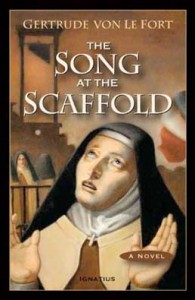 A novella in it’s truest sense, this book contains as much meaning as any tome made up 10x the pages. Â A NOT TO BE MISSED READ.
A novella in it’s truest sense, this book contains as much meaning as any tome made up 10x the pages. Â A NOT TO BE MISSED READ.
You can find it at Ignatius.com
One of the great Christian classics of all time. —Michael O’Brien, Author, Father Elijah
A poignant reminder that, for the Christian, fearlessness lies on the far side of Gethsemane and the Cross. —George Weigel, Author, Witness to Hope
Tags: carmelites, catholic, catholic podcast, catholic prayer, cathollc spirituality, Father Elijah, french revolution, george weigel, Gottfried Keller Prize, ignatius press, martyrdom
This entry was posted on Monday, February 6th, 2012 at 9:24 am
You can follow any responses to this entry through the RSS 2.0 feed.
“Rachel weeping for her children because they were no more”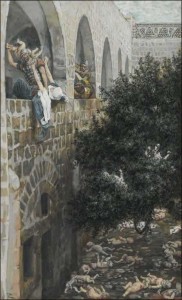
[powerpress]
an excerpt from today’s reflection by Don Schwager:
Who can explain suffering, especially the suffering of innocent children? Herod’s massacre of children who gave their lives for a person and a truth they did not know seemed so useless and unjust. What a scandal and stumbling block for those who can’t recognize God’s redeeming love. Why couldn’t God prevent this slaughter? Suffering is indeed a mystery. No explanation seems to satisfy our human craving to understand. What does Paul the Apostle mean when he says: We know that in everything God works for good with those who love him, who are called to his purpose (Romans 8:28)? These innocent children and their parents suffered for Christ. Suffering, persecution, and martyrdom are the lot of all who chose to follow Jesus Christ. There is no crown without the cross. It was through Jesus’ suffering, humiliation, and death on a cross, that our salvation was won. His death won life – eternal life for us. And his blood which was shed for our sake obtained pardon and reconciliation with our heavenly Father.
Suffering takes many forms: illness, disease, handicap, physical pain and emotional trauma, slander, abuse, poverty, and injustice. Jesus exclaimed that those who weep, who are reviled and persecuted for righteousness sake are blessed (Matthew 5:10-12). The word blessed [makarios in the Greek] literally means happiness or beatitude. It describes a kind of joy which is serene and untouchable, self-contained and independent from chance and changing circumstances of life. There is a certain paradox for those blessed by the Lord. Mary was given the blessedness of being the mother of the Son of God. That blessedness also would become a sword which pierced her heart as her Son died upon the cross. She received both a crown of joy and a cross of sorrow. But her joy was not diminished by her sorrow because it was fueled by her faith, hope, and trust in God and his promises. Jesus promised his disciples that “no one will take your joy from you” (John 16:22). The Lord gives us a supernatural joy which enables us to bear any sorrow or pain and which neither life nor death can take way. Do you know the joy of a life fully surrendered to God with faith and trust?
“Lord, you gave your life for my sake, to redeem me from slavery to sin and death. Help me to carry my cross with joy that I may willingly do your will and not shrink back out of fear or cowardice when trouble besets me.”
for the full reflection visit : Daily Reading and Meditation
Tags: catholic, catholic podcast, catholic prayer, cathollc spirituality, death, don schwager, emotional trauma, feast of the holy innocents, gospel of matthew, happiness, humiliation, injustice, innocent children, joy, love, martyrdom, suffering
This entry was posted on Wednesday, December 28th, 2011 at 12:40 am
You can follow any responses to this entry through the RSS 2.0 feed.
Trial and execution
Committed to the Tower of London, he was questioned in the presence of Queen Elizabeth, who asked him if he acknowledged her to be the true Queen of England. He replied she was, and she offered him wealth and dignities, but on condition of rejecting his Catholic faith, which he refused to accept. He was kept a long time in prison and reputedly racked twice. Despite the effect of a false rumour of retraction and a forged confession, his adversaries summoned him to four public conferences (September 1, 18, 23 and 27, 1581). Although still suffering from his ill treatment, and allowed neither time nor books for preparation, he reportedly conducted himself so easily and readily that he won the admiration of most of the audience. Tortured again on October 31, he was indicted at Westminster on a charge of having conspired, along with others, in Rome and Reims to raise a sedition in the realm and dethrone the Queen.
Edmund Campion, in a 1631 print.Campion was sentenced to death as a traitor. He answered: “In condemning us, you condemn all your own ancestors, all our ancient bishops and kings, all that was once the glory of England — the island of saints, and the most devoted child of the See of Peter.” He received the death sentence with the Te Deum laudamus. After spending his last days in prayer he was led with two companions, Ralph Sherwin and Alexander Briant, to Tyburn where the three sainted martyrs were hanged, drawn and quartered on December 1, 1581. He was 41 years of age.
Veneration and Feast Day
Edmund Campion was beatified by Pope Leo XIII on December 9, 1886. Blessed Edmund Campion was canonized nearly eighty-four years later in 1970 by Pope Paul VI as one of the Forty Martyrs of England and Wales with a common feast day of May 4. His feast day is celebrated on December 1, the day of his martyrdom.
The actual ropes used in his execution are now kept in glass display tubes at Stonyhurst College in Lancashire; each year they are placed on the altar of St Peter’s Church for Mass to celebrate Campion’s feast day—which is always a holiday for the school. – wiki
A Daily Prayer of St. Edmund
“I have made a free oblation of myself
to your Divine Majesty,
both of life and of death,
and I hope that
you will give me
grace and force to perform.
This is all I desire. Amen.”
-St. Edmund Campion
Tags: Blessed Edmund Campion, catholic, catholic podcast, catholic prayer, cathollc spirituality, death, edmund campion, england, feast day, Feast Day Edmund Campion, martyr, martyrdom, martyrs of england, queen elizabeth, Queen of England, saints
This entry was posted on Thursday, December 1st, 2011 at 12:02 am
You can follow any responses to this entry through the RSS 2.0 feed.
Blessed John Paul II reflection on the NMA:
The North American Martyrs, then, gave up their lives for the sake of the Gospel – in order to bring the faith to the native people whom they served. In fact, we are told that their faith was so strong that they yearned and prayed for the grace of martyrdom. Let us recall for a moment these heroic saints who are honoured in this place and who have left us a precious heritage.
Six of them were Jesuit priests from France: Jean de Brébeuf, Isaac Jogues, Gabriel Lalemant, Antoine Daniel, Charles Garnier and Noël Chabanel. Fired with love for Christ and inspired by Saint Ignatius of Loyola, Saint Francis Xavier and other great saints of the Society of Jesus, these priests came to the New World to proclaim the Gospel of Jesus Christ to the native peoples of this land. And they persevered to the end despite difficulties of every sort.
Two lay brothers were part of the missionary group: René Goupil and Jean de la Lande. With no less courage and fervour, they assisted the priests in their labours, showed great compassion and care for the Indians, and, laying down their lives, won for themselves the martyr’s crown.
And as these missionaries laid down their lives, they looked forward to a day when the native people would enjoy full maturity and exercise leadership in their Church. St. John de Brébeuf dreamed of a Church fully Catholic and fully Huron as well.
…
And today we are grateful for the part that the native peoples play, not only in the multicultural fabric of Canadian society, but in the life of the Catholic Church. Christ himself is incarnate in his Body, the Church. And through her action, the Church desires to assist all people “to bring forth from their own living tradition original expressions of Christian life, celebration and thought” (Ioannis Pauli PP. II, Catchesi Tradendae, 53).
Thus the one faith is expressed in different ways. There can be no question of adulterating the word of God or of emptying the Cross of its power, but rather of Christ animating the very centre of all culture. Thus, not only is Christianity relevant to the Indian people, but Christ, in the members of his Body, is himself Indian.
And the revival of Indian culture will be a revival of those true values which they have inherited and which are purified and ennobled by the Revelation of Jesus Christ. Through his Gospel Christ confirms the native peoples in their belief in God, their awareness of his presence, their ability to discover him in creation, their dependence on him, their desire to worship him, their sense of gratitude for the land, their responsible stewardship of the earth, their reverence for all his great works, their respect for their elders. The world needs to see these values – and so many more that they possess – pursued in the life of the community and made incarnate in a whole people.
Finally, it is in the Eucharistic sacrifice that Christ, joined with his members, offers up to his Father all that makes up their lives and cultures. In his Sacrifice he consolidates all his people in the unity of his Church and calls us all to reconciliation and peace.
As we go forward, let us commend ourselves to the intercession of the North American Martyrs, to Blessed Kateri Tekakwitha, Saint Joseph, Patron of Canada, and all the Saints, together with Mary the Queen of Saints. And in union with the whole Church – in the richness of her diversity and in the power of her unity – let us all proclaim by the witness of our own lives that “neither death nor life… nor any created thing, can ever come between us and the love of God made visible in Christ Jesus our Lord” (Rom. 8, 38-39).
Tags: catholic, catholic church, catholic podcast, catholic prayer, cathollc spirituality, jesuits, martyr, martyrdom, native peoples, The North American Martyrs
This entry was posted on Wednesday, October 19th, 2011 at 10:12 am
You can follow any responses to this entry through the RSS 2.0 feed.
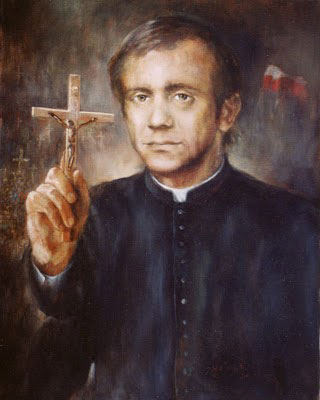 From Pope Benedict XVI, an excerpt
From Pope Benedict XVI, an excerpt
Another figure I wish to remember: Fr Jerzy Popiełuszko, a priest and martyr who was proclaimed Blessed in Warsaw precisely last Sunday. He exercised his generous and courageous ministry beside all those who were working for freedom, for the defence of life and for its dignity. His work at the service of goodness and truth was a sign of contradiction for the regime governing Poland at the time. Love of the Heart of Christ led him to give his life and his witness was the seed of a new springtime in the Church and in society. If we look at history, we can note how many pages of authentic spiritual and social renewal were written with the crucial contribution of Catholic priests, motivated solely by passion for the Gospel and for human beings and for their true freedom, both religious and civil. How many initiatives of integral human promotion have been born from the intuition of a priestly heart!
Dear brothers and sisters, let us entrust all the priests in the world to the Immaculate Heart of Mary, whose liturgical Memorial we celebrated yesterday, so that they may continue with the power of the Gospel to build everywhere the civilization of love.
Tags: Blessed Jerzy Popieluszko, catholic, catholic podcast, catholic prayer, cathollc spirituality, martyr, martyrdom, pope benedict xvi
This entry was posted on Wednesday, October 19th, 2011 at 7:47 am
You can follow any responses to this entry through the RSS 2.0 feed.
A Prayer to St. Lorenzo Ruiz
Beloved Lorenzo Ruiz, confronted with death, you proclaimed your readiness to die a thousand times for your Christian faith. Today the whole world admires your courage. We feel particularly proud of you as our brother. And we pray: You, a family man, protect our families. Keep them united in love. You, who bore your sufferings with patience and resignation, intercede for the sick of mind and body; help them to receive the grace of God’s miraculous healing. You, who died in a foreign country, take care of Filipinos living and working in this country and in other parts of the world. You, an example of Christian fortitude, sustain our faith and make it spread and grow strong all around us. You, the Philippines’ first saint, be the country’s special protector. Unite us as one people; help us to work in harmony for development and progress; and give us peace. Amen.(State your intentions). San Lorenzo Ruiz, pray for us.  Amen.
Tags: catholic, catholic podcast, catholic prayer, cathollc spirituality, Christian faith, filipino saint, martyrdom, Martyrdom of St. Lorenzo Ruiz, philippines, san lorenzo ruiz, st lorenzo ruiz, St. Lorenzo Ruiz Beloved Lorenzo Ruiz
This entry was posted on Wednesday, September 28th, 2011 at 12:58 am
You can follow any responses to this entry through the RSS 2.0 feed.







